When it comes to security, one thing is clear, people occasionally do daft things with computers and devices, and they frequently do these daft things at work. They occasionally do malicious things too but it’s mostly just daft. So we can train our employees (including managers and directors) in our procedures and policies and enforce them. In fact, spending as much time thinking about the best way to train different teams is never time wasted because it gives you the chance to use their language and create something nuanced that will make a genuine difference, which is, after all, the whole point of doing it.
Looking at some of the data that came out of Vormetric’s Insider Threat report, in actual fact, those privileged users are still posing a security headache to many of the respondents. They may be System Admins or senior colleagues who are simply not restricted or monitored in the way other employees are…these are the ones who can access very sensitive or valuable information and so need to be even more hyper-vigilant in their behaviour. But let’s face it, one phishing email clicked and payload of malware downloaded is all it takes and that could be done by an MD or a temp.
I asked the team here at Advent IM to come up with some practical tips that all employees can use, regardless of their role, to help protect their organisations and enhance their understanding of the vital role they play in securing assets.
- That email telling you there’s a juicy tax rebate waiting for you but it needs to be claimed immediately, hasn’t come from the Government. It’s a phishing email. Clicking that link will allow malware to be installed and all your personal information to be stolen. Do not click on links in emails you are not expecting and if in any doubt refer to your security manager.
- Never set your smartphone to allow download and installation of apps from sources other than an approved store. Changing this setting can allow malware to be installed without your knowledge and could result in you being a ransom ware victim.
- Always report security breaches immediately to your line manager to facilitate any counter compromise action to be undertaken as deemed necessary. If the organisation isn’t aware of it, the event could worsen or spread. Containment and control is vital as quickly as possible.
- Archive old emails and clear your deleted & sent folders regularly as a clean and tidy mailbox is a healthy mailbox.
- Never discuss work topics on social media as your comments may come back and bite you!! You could also be compromising your employers and colleagues security and increasing the likelihood or the ease of an attack.
- Don’t worry about challenging people you do not know who are not wearing ID or visitor badges. It may seem impolite but Social Engineers use inherent politeness to their advantage and can then move round a site, potentially unchallenged.
- Don’t allow colleagues to use your login credentials, this goes double for temps and contractors. Think of it like lending your fingerprints or DNA to someone, would you do that so easily? Any activity on your login will be attributed to you…
- Do you really need to take your work device to the pub with you? More than a quarter of people admit to having lost (or had stolen) up to 3 work devices and more than half of them were lost in a pub!
- Don’t send sensitive documents to your personal email address. If there is a security measure in place, it is there for a reason..
- Don’t pop any old USB into your PC. Nearly one in five people who found a random USB stick in a public setting proceeded to use the drive in ways that posed cybersecurity risks to their personal devices and information and potentially, that of their employer. It could have anything on it! exercise caution.
Some of the findings on Insider Threat from the Vormetric 2015 survey…


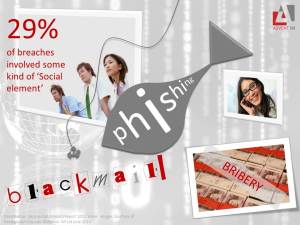
 f eliciting information or attempting to influence action via the telephone, may include such tools as “phone spoofing.” A common attack method is to call a user within an organisation and pretend to be the IT Helpdesk. From there the attacker will coerce the user into “confirming” their user name and password
f eliciting information or attempting to influence action via the telephone, may include such tools as “phone spoofing.” A common attack method is to call a user within an organisation and pretend to be the IT Helpdesk. From there the attacker will coerce the user into “confirming” their user name and password


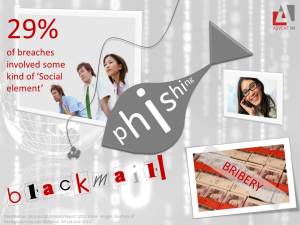


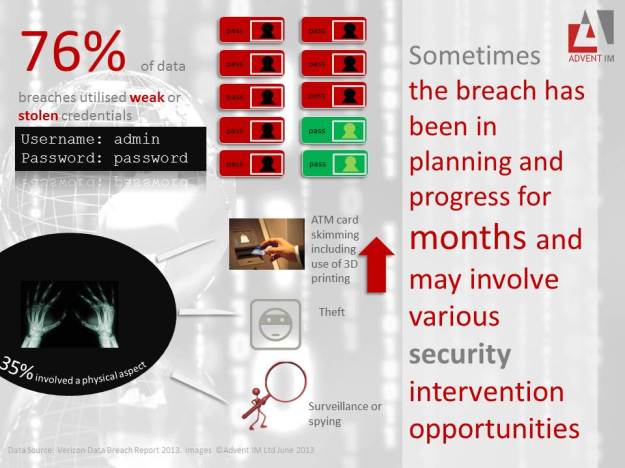
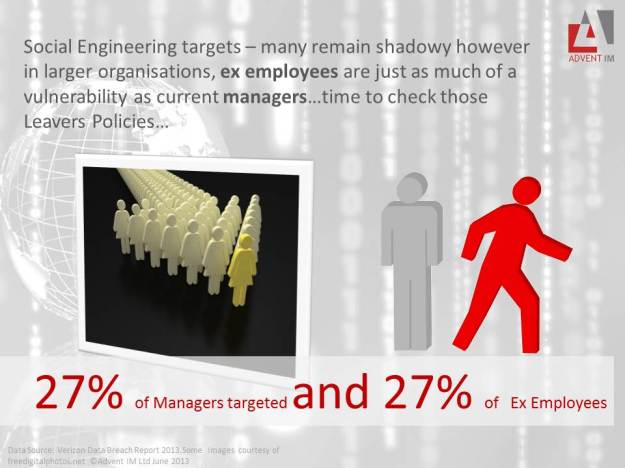
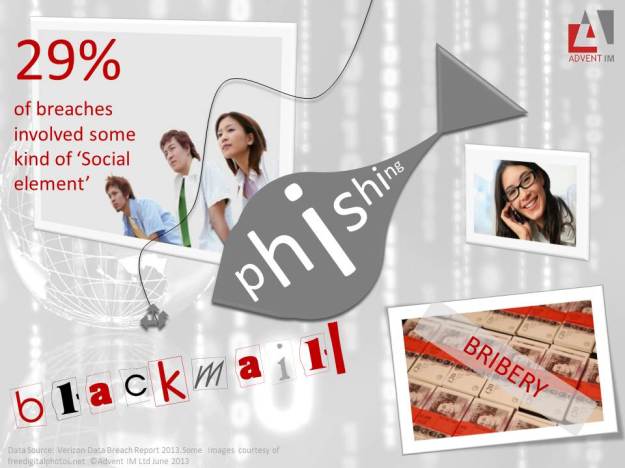




 Social Engineering – If you don’t work in either the security or IT industry, you may wonder what the term means and if it forms any real threat to you organisation. If you have heard the term, then assuming it is an IT issue in isolation, would be a mistake.
Social Engineering – If you don’t work in either the security or IT industry, you may wonder what the term means and if it forms any real threat to you organisation. If you have heard the term, then assuming it is an IT issue in isolation, would be a mistake.